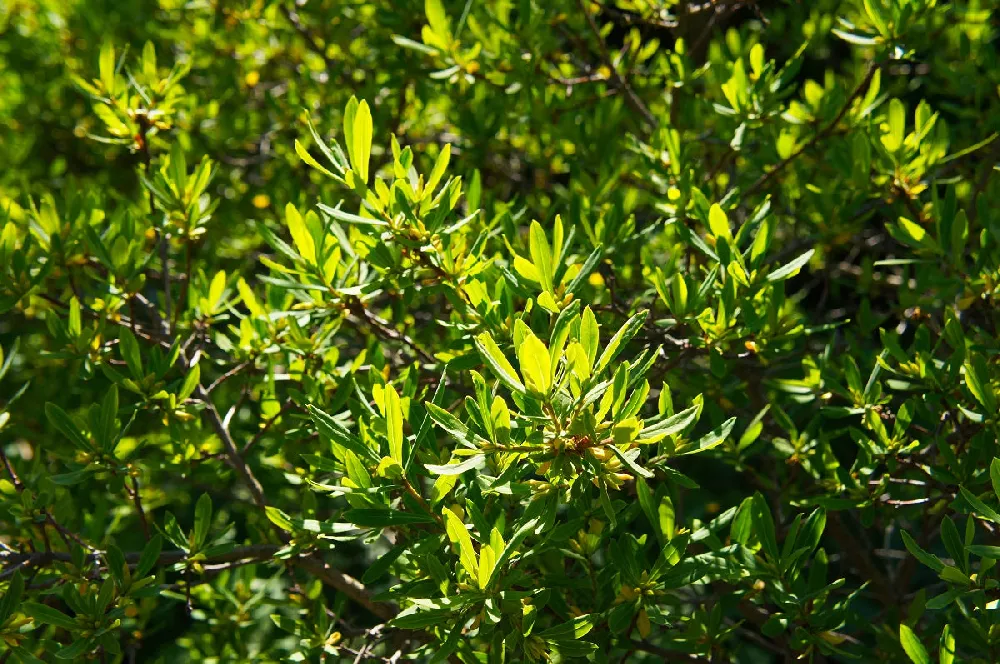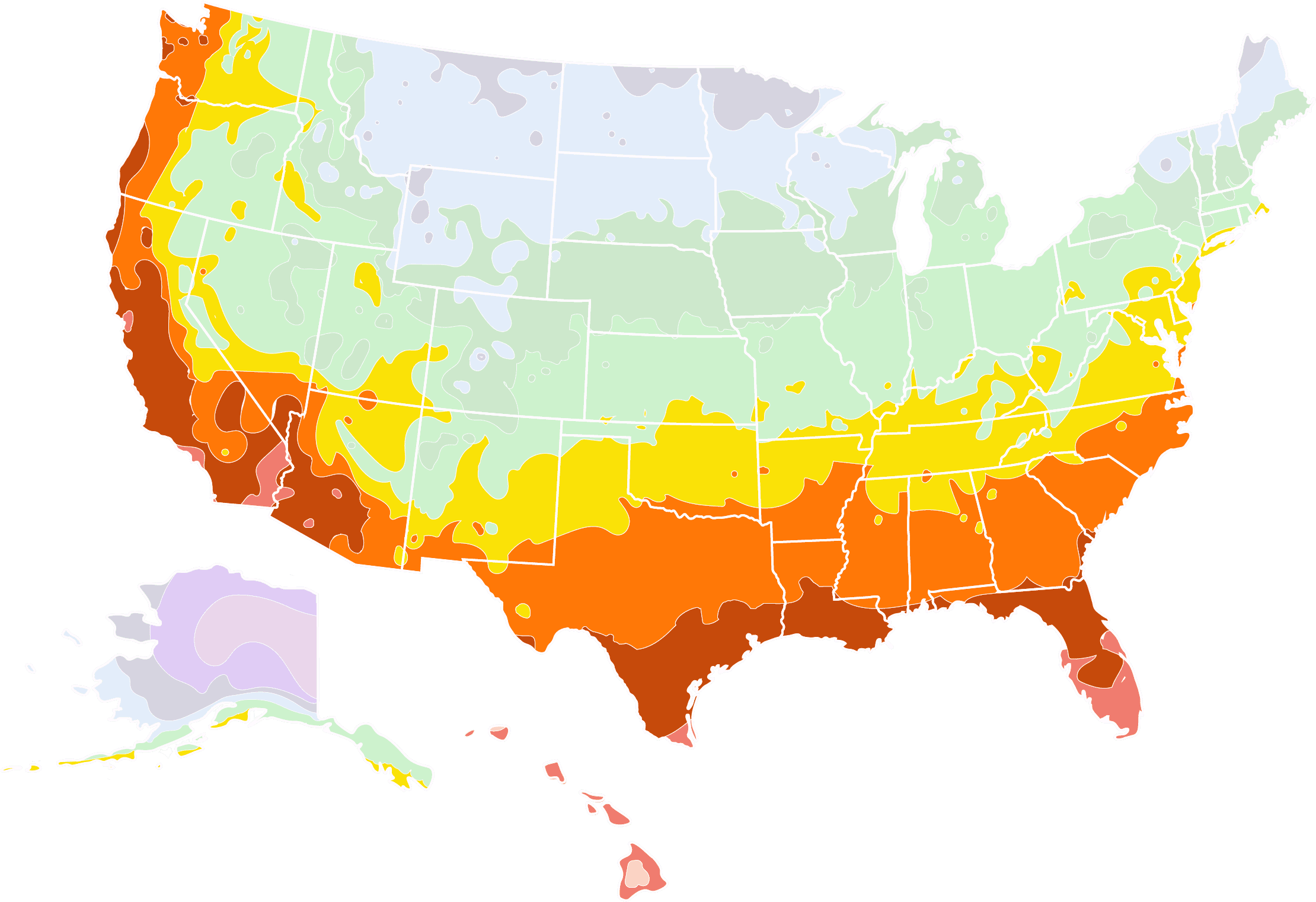- Home >
- Shrubs and Bushes >
- Wax Myrtle Trees
Wax Myrtle Trees for Sale - Buying & Growing Guide
- Ships in 1-2 days
- 1-Year Warranty Eligible
- Pots or accessories are not included unless specified in the product options.
Shipping Details:
Products shipped through FastGrowingTrees.com. Once your order is shipped, you’ll receive an email with a tracking number and estimated delivery date. Most orders will ship immediately.
Create instant interest in your garden by adding a beautiful wax myrtle tree (Myrica cerifera). This attractive and aromatic evergreen is common in the southeastern United States and is suitable as both a focal point specimen or privacy hedge. Here are some more reasons to consider these trees in your yard:
- Wax myrtle trees will add three to five feet of height every year until mature at 15 to 20 feet high.
- Many birds and other wildlife will use wax myrtle trees for both cover and food.
- Wax myrtle trees near a window or along a walkway add a wonderful fragrance.
Plant Care
Sunlight

Grows in both full sunlight and areas of partial shade. Five hours a day of sun exposure is ideal.
Watering
Needs watering once every two weeks. Avoid overwatering.
Fertilizing

Survives without fertilization. Provide a nitrogen-rich fertilizer only when the plant shows slowed growth.
Planting instructions
Choose a site with full sun to partial shade where its shallow roots won’t be disturbed. Wax myrtle trees like acidic, moist, and well-draining soil. These trees are perfect choices for coastal settings as they are very tolerant of salt and sand. If you are planting more than one tree, space them six to 12 feet apart. Dig a hole that is two to three times as wide as your tree’s rootball and the same depth. Amend the soil you’ve removed for drainage, moisture retention, and nutrients. Loosen the tree’s roots with your fingers before placing the tree into the hole. Line up the rootball’s top edge so that it sits just above the surrounding soil. Add some soil to the bottom of the hole if you need additional height. Hold the tree straight while returning the soil to the hole. Tamp the soil down around the roots as you go, stopping when it is half full. Fill the hole with water, letting it drain. Continue backfilling with the soil until you’ve reached the top. Soak it again. Use the leftover soil to make a wall several inches high around the edges of the planting hole. It will help with water collection and retention, as will adding a layer of mulch. Just be sure to avoid any mulch touching the tree’s base.
Watering and nutrients
Young wax myrtle trees need moist soil when they are first establishing roots. Once established, the trees will tolerate extreme conditions such as drought and flooding. During especially dry periods, water deeply and less frequently than daily waterings. Keeping the rootball and surrounding soil moist is ideal. Wax myrtle trees are not heavy feeders but do enjoy the addition of some iron and sulfur. If you notice that your wax myrtle is not growing as fast as it should, you can try adding nitrogen to the soil to encourage more vigorous growth.
Pollination
Wax myrtle trees bloom in March and April in warmer climates. Cooler locales have blooms from April to June. These trees are dioecious, meaning the male and female flowers are on different trees. Only the female trees will produce berries. Bees and butterflies aid in pollination when both types of trees are present.
Pruning
Wax myrtle trees require little ongoing maintenance. You may need to prune your tree to remove dead or diseased branches. If you are shaping your tree into a desired shape or form or a hedge, you may also choose to trim the tree. Know that this species responds well to heavy pruning. But if you decide to remove significant portions of your tree, you should do so in winter when the plant is dormant. Along with dead or diseased branches, you might want to remove any that are crossed or rubbing against each other.
Pests and diseases
There are a few common pests that can afflict a wax myrtle tree, including whiteflies and spider mites. They are also hardy and tolerant of most conditions, but high pH soils can cause the leaves’ yellowing. There are also infrequent issues with leaf anthracnose, leaf spot, and leaf mosaic. Each can be dealt with using preventative measures. Water only at the tree’s base and keep the bark, branches, and leaves dry.
FAQs
What are wax myrtle trees used for?
Candlemakers use wax myrtle tree leaves for making candles both fragrant and flammable. The leaves are full of aromatic resin, as are the tiny dots covering them. When crushed, the leaves emit a strong fragrance. This trait makes the tree a popular choice for walking gardens. Some gardeners plant wax myrtle trees for their beneficial nitrogen-fixing properties. Native Americans used parts of the tree for certain medicinal preparations. The tree’s fruit is still used for candles, sealing wax, and soaps.
Are there other names for wax myrtle trees?
Along with the botanical name of Myrica cerifera, the wax myrtle tree is called southern bayberry. It also has variations of its name, such as southern wax myrtle or southern wax myrtle. The tree is often confused with many of the bayberry varieties as they are related.
Are any parts of the wax myrtle edible?
The fruit of the wax myrtle tree is edible but isn’t very tasty. The fruit is quite intense and can be eaten raw or cooked. The fruits are sometimes used in winemaking, and the leaves are a foaming agent in some beer recipes. Many bird species rely on the berries for winter survival.
Does the wax myrtle tree make a good wildlife tree?
These trees attract many animals, birds, and bugs and provide excellent winter cover. The tree is a host plant for some butterflies and attracts other pollinators with its flowers. The fruit provides food for overwintering birds and small mammals.
Can I plant my wax myrtle tree in a container?
Ensure your container is large enough to accommodate your tree’s root growth for two to three years. Add drainage material such as gravel to the bottom of the pot before adding your soil. Use a high-quality potting mix that is loose and allows for good drainage. Plant as directed above for in-ground trees. Use sphagnum moss, small stone mulch, or wood chips to retain moisture.
Compare Similar Products
Customer Reviews
 A trip across the country to Wa State
A trip across the country to Wa StateOverall plant looked healthy and pot was still moist. There were a couple of branches that were broken and one partial dead branch about 3 inches on the top. Planted in the ground and I'm seeing tiny new growth so I think it will grow nicely.
 Wax Myrtle
Wax MyrtleIt was fine, one of my plants wasn't in the best shape when arrived, but the other one is great! I haven't planted my plants yet since this week has been extremely hot. My plants overall are doing well can't wait to plant them.









